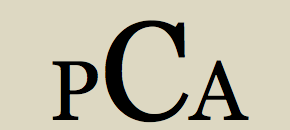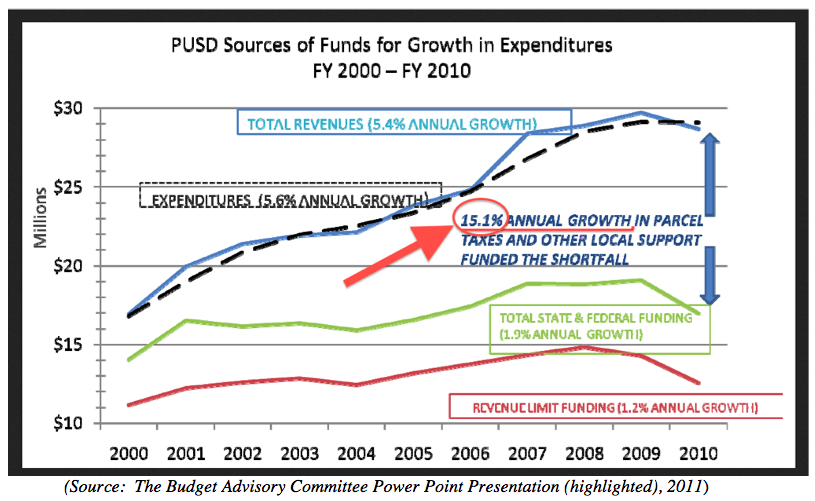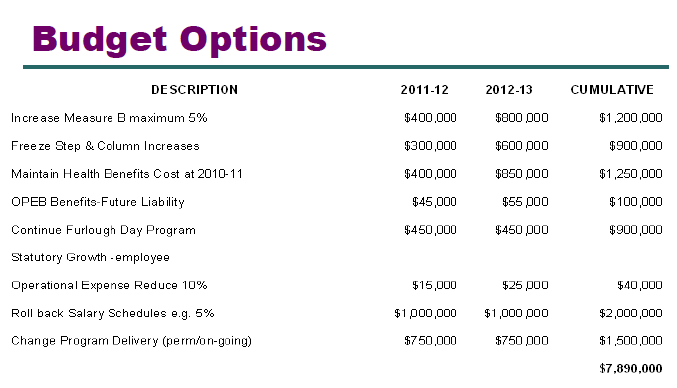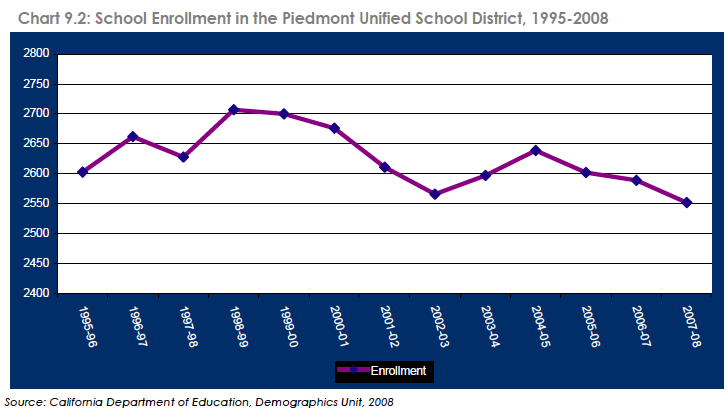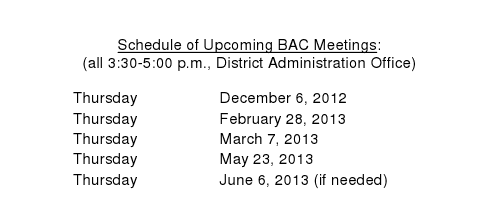Nov 4 2012
And Abolishes Citizens Advisory Committee Independence –
At its meeting on Wednesday, October 24, the Piedmont School Board, in ongoing efforts to grapple with significant and ongoing budget shortfalls, directed School District staff to draft a tentative resolution to restructure Piedmont’s parcel tax as a permanent “evergreen” tax, possibly with an annual escalator of 2%. The Board also directed staff to draft a resolution to abolish the Citizens’ Advisory Committee (CAC) as an independent oversight entity, and to prepare an additional “flat tax” proposal in case Proposition 30 fails to win a majority vote in the Nov. 6 election.
The Board requested public input before its next November 14 meeting when the two draft resolutions will be presented. President of the Board, Rick Raushenbush, noted that public input on the alternative tax structures has been “all over the map.” Click here to send email all School Board Members
Draft Resolutions to be discussed Nov. 14
- PERMANENT TAX of $2,088 – $3,547 per parcel
- 0% to 2% ANNUAL ESCALATOR (to be decided by Board on Nov. 14)
- no increased written or public notice to taxpayers of proposed increases
- continue existing notice
- LOW INCOME EXEMPTION based on SSI Income limits
- Convert to subcommittee of the Budget Advisory Committee (rather than independent oversight committee)
- Members appointed by President and Vice President (rather than Board)
- Limit to 3-5 members (rather than at least 7)
- Past District staff permitted to serve on CAC subcommittee (if resident of Piedmont)
- POSSIBLE ADDITIONAL EMERGENCY
- Flat $275 per parcel for 4 years
A Major Restructuring of Piedmont School Parcel Tax
The proposed draft will provide for a permanent tax, eliminating
sing above the current 33% of the District’s budget.
The level of the permanent tax would be the current Measure B tax, plus an anticipated 5% increase in June 2013, for a total amount of $2,088 – $3,547 per parcel. (The discretionary 5% increase, previously authorized by the 2009 Measure B, will be voted on by the Board in March 2013.) The restructured Measure B would become effective on July 1, 2014 when the current 4-year measure expires.
No enhanced notice of
While some Board members expressed a desire for greater accountability through annual public forums, polls, surveys, or other options,
Citizens’ Advisory Committee loses independence
The
This change has additional impacts. Members of the CAC subcommittee are appointed by the Superintendent, rather than the Board. Persons previously on the District staff will be permitted to serve on the CAC if they are a Piedmont resident. Currently, district staff serve on the BAC, while the CAC consists of Piedmont residents, enabling resident input with no conflicts of interest when advising the Board on parcel tax levies.
The Citizens Advisory Committee (CAC) was mandated by the 2009 parcel tax measures and established as an independent Board-appointed committee. The Committee is charged with “conducting an independent examination of the District’s budget“. (See, as an example, the 2012 CAC report.) It prepares an annual comprehensive report with recommendations on the appropriate parcel tax levy amount and:
“a high level, comprehensive analysis of the District’s budget, including relevant metrics, historical trends, and comparisons with similar school districts, that provides an analytical basis for the Committee’s recommendations.”
While the Budget Advisory Committee has traditionally been allowed to make recommendations to the School Board on the budget, the extent to which the CAC could analyze and make recommendations on program and personnel costs was challenged by district personnel. In response to these
BAC
An “SSI” Low-Income Exemption
A “senior” exemption to the school parcel tax based on age will not be included in the draft resolution. However, an exemption based on meeting the income limitations for Supplemental Security Income (SSI) will be included. This provision was supported by 4 Board members. Eligibility would be established by the taxpayer’s annual “SSI Award” letter from the local Social Security office, rather than
Additional 4 Year Flat Tax Possible if Proposition 30 Fails
The Board also directed staff to prepare a second parcel tax resolution for an emergency tax. If Proposition 30 fails in the November 6 election, the Board may ask voters to approve this additional funding before reducing costs. The emergency tax would be a flat, annual
The $275 tax will generate $1.5 million, designed to match the automatic one-time 2012 trigger cuts of $1.5 million which will occur if Proposition 30 fails. However, the new temporary measure is proposed for a term of 4 years, not 1 year.
According to Hubbard, contract negotiations with employee unions will be opened the day after the vote on Proposition 30 (Nov. 7, 2012) in an effort to eliminate a $1.2 million shortfall in Piedmont’s 3 year budget plan, restore a state mandated reserve of 3% (almost $1 million), and if Proposition 30 fails, address an additional $1.5 million shortfall, for a total potential $3.5 million deficit. District is currently borrowing and repaying funds from the School Bond Fund to cover cash flow issues. School Superintendent Constance Hubbard previously identified $4 million in ongoing District operating cost reductions which have not been implemented.
The District
On November 14, the School Board will review the draft language of the two
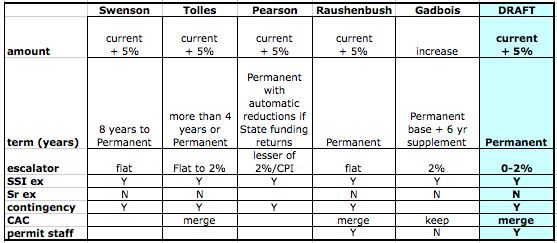
School Board positions and Draft Resolution (based on direction to staff – no vote taken).

